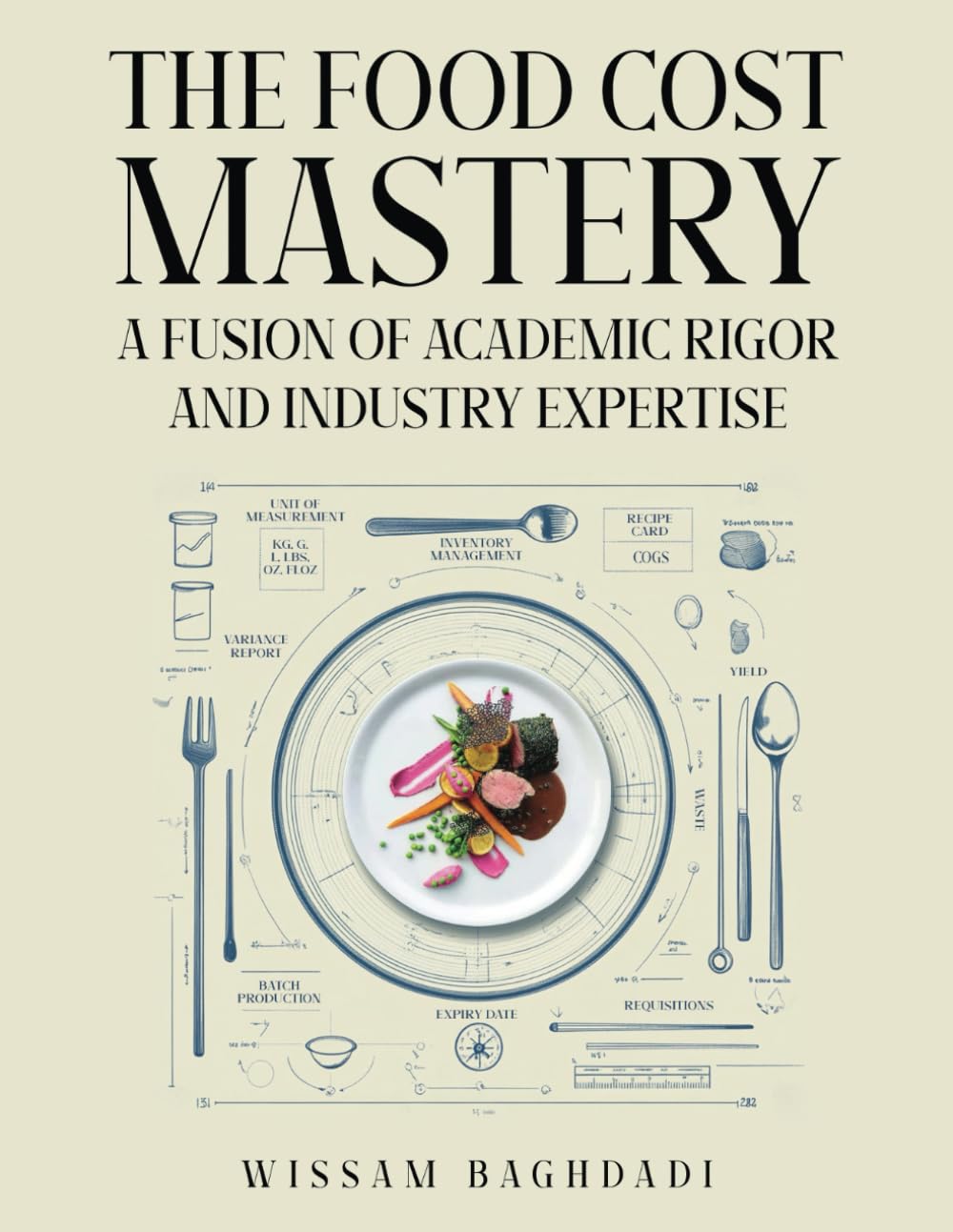
In the competitive world of the restaurant industry, operational inefficiencies can be a silent profit killer. From slow service to redundant tasks, every delay and unnecessary step contributes to rising costs and customer dissatisfaction. As emphasized in The Food Cost Mastery: Fusion of Academic Rigor and Industry Expertise by Wissam Baghdadi, improving restaurant operations is essential not only to enhance customer experience but also to control costs and increase profitability. Here are some common inefficiencies in restaurant operations and practical solutions to streamline workflows.
1. Slow Service Times
One of the most noticeable inefficiencies in any restaurant is slow service. Whether it’s due to understaffing, inefficient kitchen workflows, or poor coordination between the front and back of house, delays can lead to customer frustration, reduced turnover, and lower satisfaction scores. Baghdadi stresses that streamlining communication between the front and back of house is crucial to preventing delays.
Practical Solutions:
- Staff Training: Regular training on how to efficiently communicate orders and manage time is vital for both servers and kitchen staff.
- Technology Integration: Implementing point-of-sale (POS) systems that allow for faster order processing can reduce order wait times.
- Standardized Procedures: Creating clear guidelines for order taking, food prep, and delivery ensures that staff knows exactly what is expected and how to execute their tasks quickly.
2. Redundant Tasks
Redundant tasks—such as duplicating orders, repeating steps, or performing the same tasks multiple times—can significantly slow down restaurant operations and waste valuable labor. Baghdadi highlights that this inefficiency often stems from poor processes or lack of organization.
Practical Solutions:
- Menu Optimization: Simplifying the menu and limiting the number of items with similar ingredients can reduce the complexity of preparation. This not only cuts down on prep time but also minimizes ingredient waste.
- Task Delegation: Ensuring that staff members focus on specific roles can prevent overlaps in responsibilities. For example, kitchen staff should concentrate on food preparation, while servers handle order taking and customer interaction.
- Automated Systems: Implementing automated systems for inventory management and scheduling can save time by removing manual processes that may be prone to errors and redundancies.
3. Poor Inventory Management
Ineffective inventory management can lead to both excess waste and stockouts. Baghdadi stresses that maintaining optimal inventory levels is essential for balancing cost control and customer satisfaction. Over-ordering leads to wasted food, while under-ordering may cause missed sales and dissatisfied customers.
Practical Solutions:
- Inventory Tracking Software: Using advanced inventory management software can help track inventory in real-time, reducing the chances of overstocking or running out of critical ingredients.
- Forecasting Demand: Analyzing past sales data and trends can help predict future demand, ensuring that inventory is ordered accordingly without overburdening the storage.
4. Inefficient Kitchen Workflow
A disorganized kitchen can hinder the speed and quality of food preparation. Whether it’s misplaced tools, inefficient ingredient storage, or poor organization of the cooking stations, these inefficiencies lead to delays, errors, and food waste.
Practical Solutions:
- Kitchen Layout Optimization: Streamlining the kitchen layout by ensuring that equipment and ingredients are placed logically can improve workflow. Items used most frequently should be closest to the workstations.
- Batch Cooking: Preparing ingredients in batches during slower periods (such as chopping vegetables, marinating meats, etc.) can save valuable time during peak hours.
- Clean As You Go: Encouraging kitchen staff to clean and organize their workstations continuously can prevent clutter and reduce the time spent searching for tools or ingredients.
5. Ineffective Use of Technology
Despite the abundance of available technology, many restaurants fail to leverage it fully to optimize operations. This inefficiency can lead to slower service, miscommunication, and human error.
Practical Solutions:
- POS System Integration: A POS system that integrates directly with the kitchen and bar staff can speed up order processing and reduce errors.
- Mobile Ordering and Payment: Allowing customers to place orders via mobile apps or tableside devices can reduce wait times and eliminate ordering errors, thus improving service efficiency.
Streamlining restaurant operations requires a proactive approach to identifying inefficiencies and implementing practical solutions. By optimizing service times, eliminating redundant tasks, managing inventory more effectively, improving kitchen workflows, and integrating technology, restaurants can significantly reduce operational costs while enhancing the customer experience. As The Food Cost Mastery by Wissam Baghdadi illustrates, taking these steps not only drives profitability but also ensures long-term success in a competitive industry.